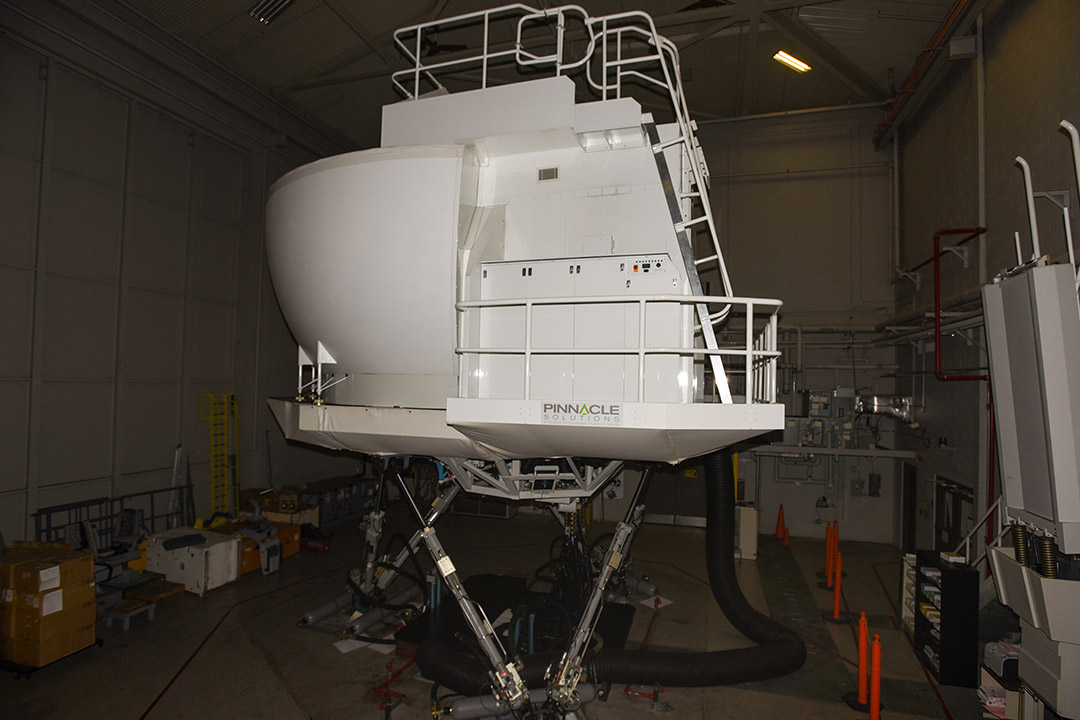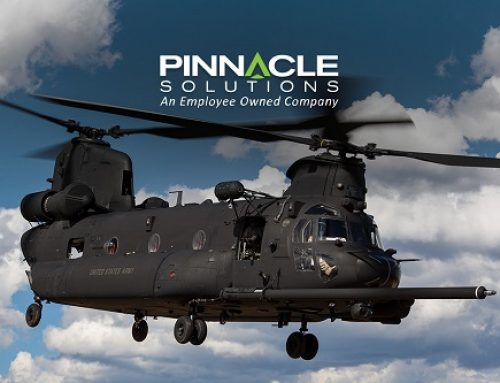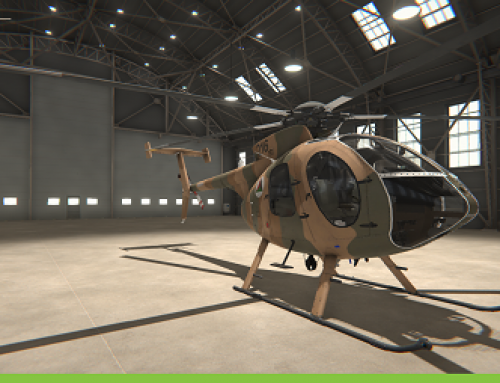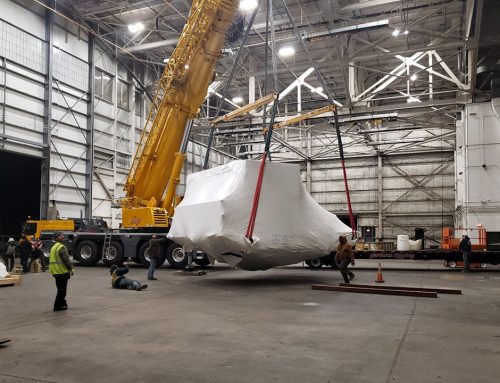“These simulators give the crewmembers [the ability] to utilize the written instruction on how to fly the aircraft through devices simulating real-time,” said Joseph Mcgann, a Pinnacle Solutions KC-10 boom operator instructor. “[This affords] them the opportunity to experience how to fly the airplane safely.”
Pinnacle Solutions is a disabled veteran-owned small business with a broad range of experience in training device development, modifications, technical publications, and engineering and training services. The employees are contracted through the Air Force which provides instructors for flight engineers, pilots, and boom operators.
The simulators are operated by a hydraulic system that bases its motions off the rate of movement of the aircraft that the trainee pilots’ input. Its movements are connected through the action taken in the control panel but knows its limits. The computer communicates with the hydraulics to give the sensation of what would happen without surpassing the simulator’s limits.
“Sometimes crewmembers come out of the simulators and they will have perspired heavily because they sense the realism,” said Keith A. Peterson, a Pinnacle Solutions KC-10 flight engineer instructor. “It feels like you’re climbing and descending in the airplane, you can even feel the physiological effects like your [ear popping.] The motion and visual effects combined give you a very realistic seat-of-the-pants feel.”
The visual effects span over three Mylar screens that give a full view of what a crew member would see in a real aircraft. The computer can replicate approximately 25 Air Force installation flightlines around the world and has an almost infinite number of scenarios. The instructors have the capability to introduce inclement weather or aircraft malfunctions that could happen during an actual flight to better prepare their crewmembers for real-world situations.
“Part of what we do from initial qualifications through refreshers and upgrade training is to teach the procedures to follow in a checklist,” said Mcgann. “The checklist gives the crew a step-by-step of what to do in certain situations while [the instructors] watch and introduce different obstacles. That way, if something happens, we can mitigate the effect to the safety of the aircraft. We call it the tertiary rule—always have a backup for your backup.”
Once a week, the facility offers proficiency training for crews to come in and practice particular aspects of working on an aircraft. All members are required to accrue a minimum number of hours per month. If members are unable to get them in-flight, they can stay current on what they need in the simulators.
Although Joint Base MDL will be bringing in the new KC-46 Pegasus in place of the KC-10, the training will remain relatively similar, as it is the most accurate way for Airmen to practice safely.
Most of the instructors have been here for more than five years and served in the military performing the jobs they now teach. With immense knowledge from previous jobs, instructors are able to give their students superior training.
“I think we provide an outstanding training here and people get a lot out of these simulators that we have,” said Peterson. “The aircrews are able to master the skills they need to become excellent pilots, engineers and boom operators. They can learn the basics in the safety of the simulator without risking their lives and the lives of others in a real aircraft.”









